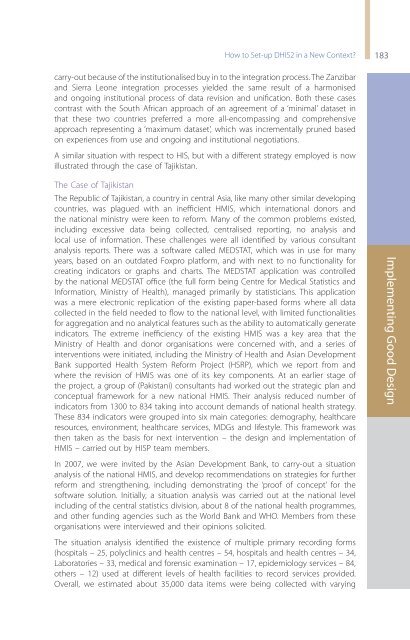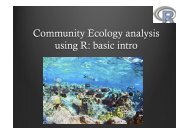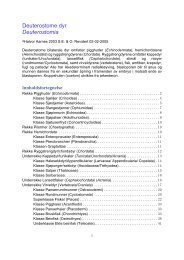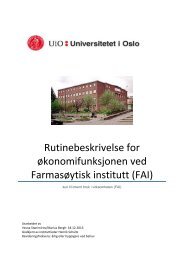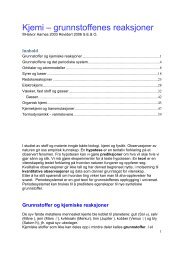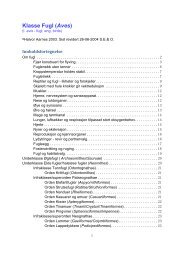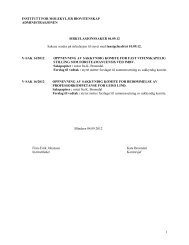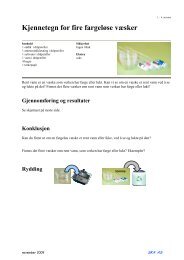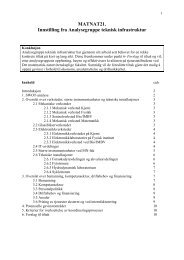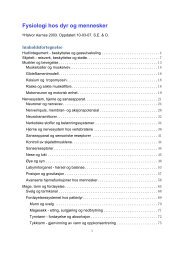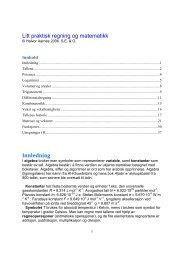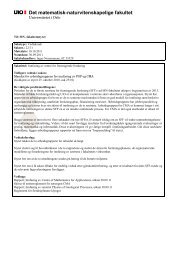7 How to Set-up DHIS2 in a New Context?
7 How to Set-up DHIS2 in a New Context?
7 How to Set-up DHIS2 in a New Context?
Create successful ePaper yourself
Turn your PDF publications into a flip-book with our unique Google optimized e-Paper software.
<strong>How</strong> <strong>to</strong> <strong>Set</strong>-<strong>up</strong> <strong>DHIS2</strong> <strong>in</strong> a <strong>New</strong> <strong>Context</strong>?183carry-out because of the <strong>in</strong>stitutionalised buy <strong>in</strong> <strong>to</strong> the <strong>in</strong>tegration process. The Zanzibarand Sierra Leone <strong>in</strong>tegration processes yielded the same result of a harmonisedand ongo<strong>in</strong>g <strong>in</strong>stitutional process of data revision and unification. Both these casescontrast with the South African approach of an agreement of a ‘m<strong>in</strong>imal’ dataset <strong>in</strong>that these two countries preferred a more all-encompass<strong>in</strong>g and comprehensiveapproach represent<strong>in</strong>g a ‘maximum dataset’, which was <strong>in</strong>crementally pruned basedon experiences from use and ongo<strong>in</strong>g and <strong>in</strong>stitutional negotiations.A similar situation with respect <strong>to</strong> HIS, but with a different strategy employed is nowillustrated through the case of Tajikistan.The Case of TajikistanThe Republic of Tajikistan, a country <strong>in</strong> central Asia, like many other similar develop<strong>in</strong>gcountries, was plagued with an <strong>in</strong>efficient HMIS, which <strong>in</strong>ternational donors andthe national m<strong>in</strong>istry were keen <strong>to</strong> reform. Many of the common problems existed,<strong>in</strong>clud<strong>in</strong>g excessive data be<strong>in</strong>g collected, centralised report<strong>in</strong>g, no analysis andlocal use of <strong>in</strong>formation. These challenges were all identified by various consultantanalysis reports. There was a software called MEDSTAT, which was <strong>in</strong> use for manyyears, based on an outdated Foxpro platform, and with next <strong>to</strong> no functionality forcreat<strong>in</strong>g <strong>in</strong>dica<strong>to</strong>rs or graphs and charts. The MEDSTAT application was controlledby the national MEDSTAT office (the full form be<strong>in</strong>g Centre for Medical Statistics andInformation, M<strong>in</strong>istry of Health), managed primarily by statisticians. This applicationwas a mere electronic replication of the exist<strong>in</strong>g paper-based forms where all datacollected <strong>in</strong> the field needed <strong>to</strong> flow <strong>to</strong> the national level, with limited functionalitiesfor aggregation and no analytical features such as the ability <strong>to</strong> au<strong>to</strong>matically generate<strong>in</strong>dica<strong>to</strong>rs. The extreme <strong>in</strong>efficiency of the exist<strong>in</strong>g HMIS was a key area that theM<strong>in</strong>istry of Health and donor organisations were concerned with, and a series of<strong>in</strong>terventions were <strong>in</strong>itiated, <strong>in</strong>clud<strong>in</strong>g the M<strong>in</strong>istry of Health and Asian DevelopmentBank s<strong>up</strong>ported Health System Reform Project (HSRP), which we report from andwhere the revision of HMIS was one of its key components. At an earlier stage ofthe project, a gro<strong>up</strong> of (Pakistani) consultants had worked out the strategic plan andconceptual framework for a new national HMIS. Their analysis reduced number of<strong>in</strong>dica<strong>to</strong>rs from 1300 <strong>to</strong> 834 tak<strong>in</strong>g <strong>in</strong><strong>to</strong> account demands of national health strategy.These 834 <strong>in</strong>dica<strong>to</strong>rs were gro<strong>up</strong>ed <strong>in</strong><strong>to</strong> six ma<strong>in</strong> categories: demography, healthcareresources, environment, healthcare services, MDGs and lifestyle. This framework wasthen taken as the basis for next <strong>in</strong>tervention – the design and implementation ofHMIS – carried out by HISP team members.Implement<strong>in</strong>g Good DesignIn 2007, we were <strong>in</strong>vited by the Asian Development Bank, <strong>to</strong> carry-out a situationanalysis of the national HMIS, and develop recommendations on strategies for furtherreform and strengthen<strong>in</strong>g, <strong>in</strong>clud<strong>in</strong>g demonstrat<strong>in</strong>g the ‘proof of concept’ for thesoftware solution. Initially, a situation analysis was carried out at the national level<strong>in</strong>clud<strong>in</strong>g of the central statistics division, about 8 of the national health programmes,and other fund<strong>in</strong>g agencies such as the World Bank and WHO. Members from theseorganisations were <strong>in</strong>terviewed and their op<strong>in</strong>ions solicited.The situation analysis identified the existence of multiple primary record<strong>in</strong>g forms(hospitals – 25, polycl<strong>in</strong>ics and health centres – 54, hospitals and health centres – 34,Labora<strong>to</strong>ries – 33, medical and forensic exam<strong>in</strong>ation – 17, epidemiology services – 84,others – 12) used at different levels of health facilities <strong>to</strong> record services provided.Overall, we estimated about 35,000 data items were be<strong>in</strong>g collected with vary<strong>in</strong>g


